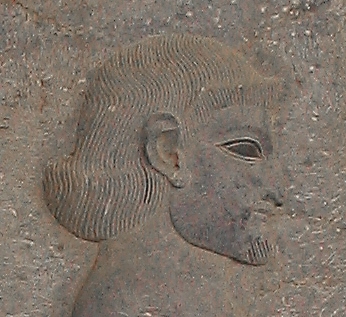|
Other Archaeological Sites / The Neolithic of the Levant (500 Page Book Online) Neolithic Period (5000-3000 BC)
Painted pottery was not made by the Arabian Neolithic people though coarse red ware may have been manufactured by them in the Central Gulf region. The stone tools of the Arabian Neolithic are different from the Ubaid material -- tending to be made from shorter flakes which have been chipped on both sides. This local tool-kit is called the Arabian Bifacial Tradition ... The Arabian-Ubaid Interaction During the 6th and 5th millennium BC the peoples of Ubaid in Mesopotamia and the Arabian Neolithic met and interacted. This was first realised when numerous sites were identified in the Central Gulf region which contained pottery in the Ubaid style. These were mostly coastal sites and were mainly found in the northeastern province of Saudi Arabia though sites were also identified in Bahrain and Qatar. The majority were small and ephemeral but a handful were large with deep deposits and abundant pottery. This part of Arabia had enjoyed a close and integral relationship with Southern Mesopotamia. More controversially it was suggested that the Mesopotamian and Ubaidian related Arabian sites should be regarded as part of the same social and economic system ... Bronze Age Period (3000-1300 BC) This period shows the establishment of a population in Sharjah where agriculture and grazing flourished and increased. As the 3rd millennium BC draws near there is evidence for renewed contact with Southern Mesopotamia. From the late 4th millennium BC there are references in the earliest Mesopotamia texts to a place named Dilmun (Bahrain). Dilmun is mentioned along with two other places: Magan (Southeast Arabia) and Meluhha (Indus Valley). These city-states supplied southern Mesopotamia with a wide range of raw materials and exotic goods. These include timber -- stone -- and above all copper. In prehistoric times in southern Arabia we have evidence of human settlement for all major periods of the Stone Age so it can hardly be assumed that there was no continuous human settlement in Southern Arabia prior to the first millennium BC ... Iron Age Period Onwards From circa 1200 BC the region of the Southern Arabian Peninsula was ruled by three successive civilisations. The (1)Mineans (1200-650 BC) -- (2)Sabeans (Sheba) (1000 BC - 570 AD) -- (3)Himyarite (2nd to 6th centuries AD) brought with them the rudiments of what was to become the highly developed civilization of Southern Arabia. These three kingdoms all depended for their wealth on the spice trade. Aromatics such as myrrh and frankincense were greatly prized in the ancient civilised world and were used as part of various rituals in many cultures including Egypt Greece and Roman ... In the 11th century BC land routes through Arabia were greatly improved by using the camel as a beast of burden and frankincense was carried from its production centre at Qana to Gaza in Egypt. The camel caravans also carried gold and other precious goods which arrived in Qana by sea from India ... The chief incense traders were the Minaeans who established their capital Karna before they were superseded by the Sabeans in 950 BC. The Sabean capital was Marib where a large temple was built. The mighty Sabean civilization endured for about 14 centuries and was based not only on the spice trade but also on agriculture. The impressive dam built at Marib in the 8th century provided irrigation for farmland and stood for over a millennium. Some Sabean carved inscriptions from this period are still extant ... The Himyarites established their capital at Dhafar and gradually absorbed the Sabean Kingdom. They were culturally inferior to the Sabeans and traded from the port of Muza on the Red Sea. By the first century BC the Romans had conquered the area ... |

